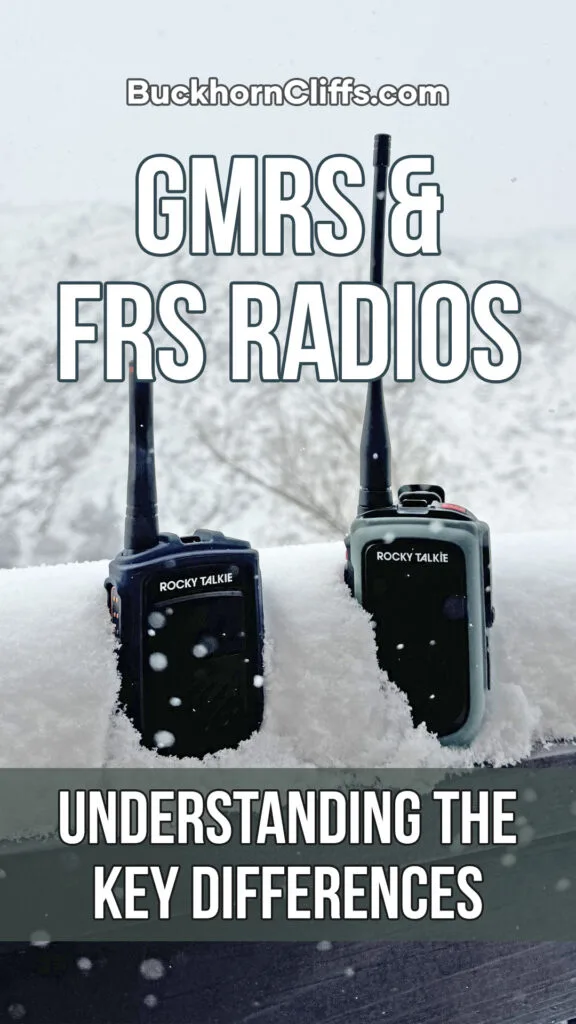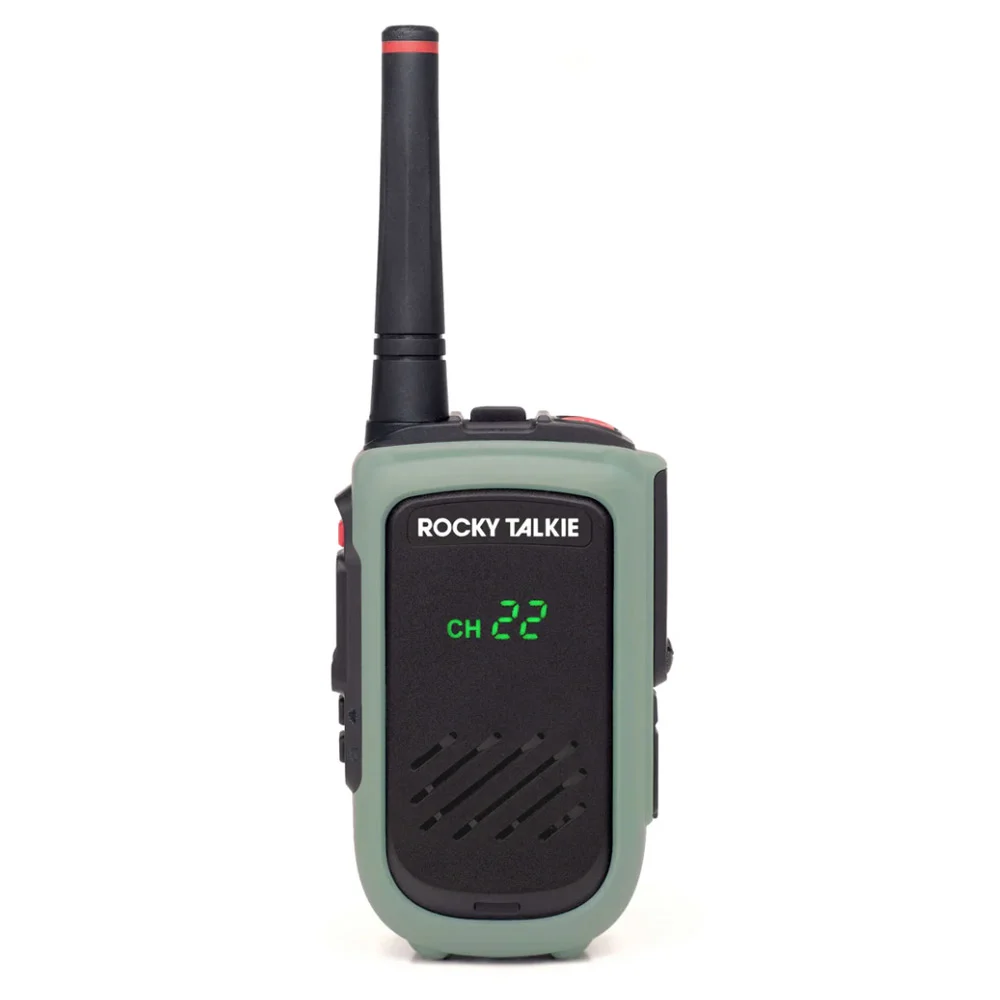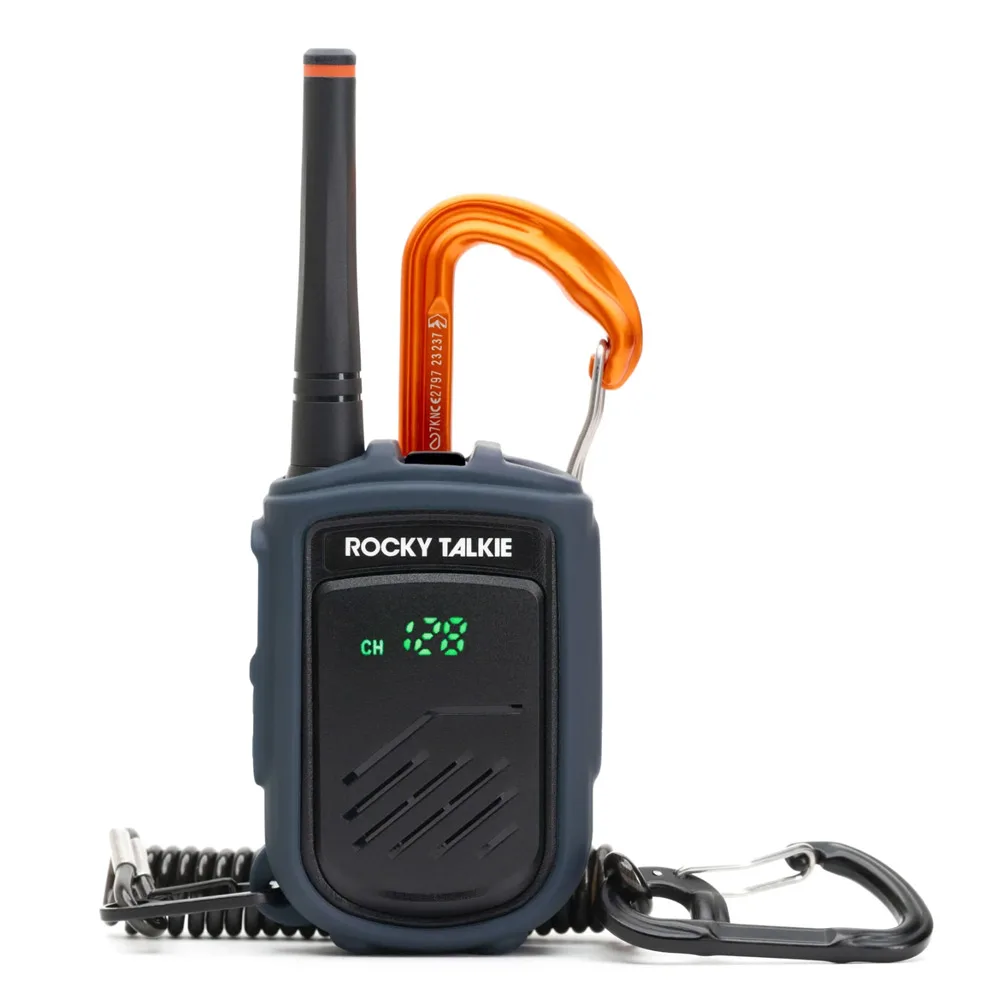If you’ve ever looked into two-way radios for outdoor adventures, emergency preparedness, or simply staying in touch with family, you’ve likely come across GMRS (General Mobile Radio Service) and FRS (Family Radio Service). While both serve similar purposes, they have important differences that can impact how and where you use them. Here’s a straightforward breakdown to help you choose the right option.
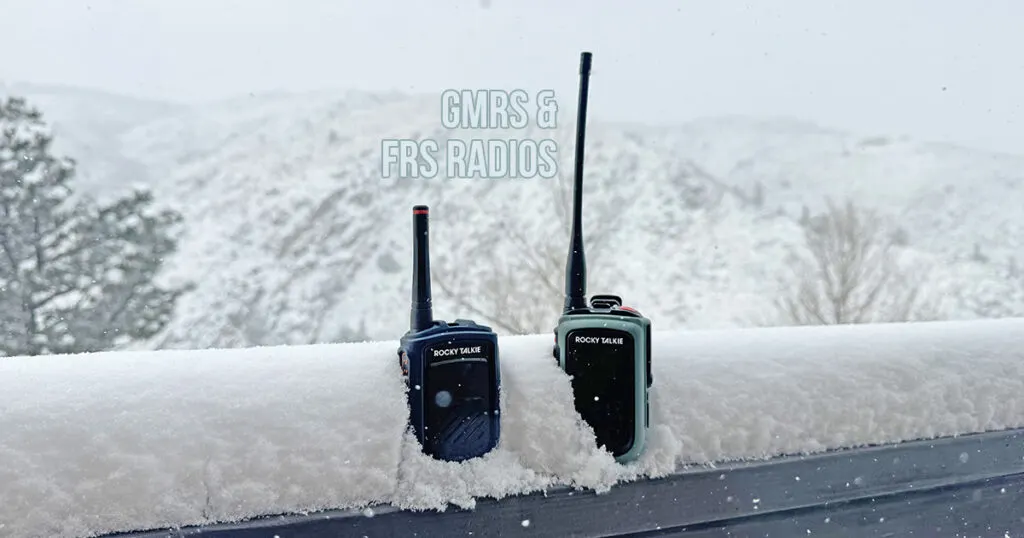
In this post:
Power and Range: Critical Differences
The most significant difference between GMRS and FRS radios is power output. GMRS radios can transmit up to 50 watts, while FRS radios are capped at 2 watts. This means GMRS radios can communicate over much longer distances, often reaching 5 to 25 miles depending on terrain and antenna setup. In contrast, FRS radios typically have a range of 1 to 2 miles.
Key Points:
- GMRS Power: Up to 50 watts for extended range.
- FRS Power: Limited to 2 watts for short-range use.
- Range: GMRS can reach up to 25 miles; FRS generally covers 1-2 miles.
How Range is Impacted:
- Terrain: Hills, buildings, and dense forests can reduce range for both GMRS and FRS.
- Line of Sight: GMRS performs much better in open areas due to higher power and external antennas.
For those who prioritize range—such as hikers in remote areas, off-road enthusiasts, or preppers—GMRS is the clear winner. If your needs are limited to close-quarters communication, FRS might suffice.
My Pick: Rocky Talkies (here’s why)
Exceptional Durability
Built to withstand harsh conditions, Rocky Talkies feature a rugged design with a shatterproof screen and reinforced housing. They are engineered to endure drops, impacts, and extreme environments, making them reliable companions for backcountry adventures.
Long Battery Life
Equipped with a high-capacity lithium-ion battery, these radios provide up to 4 days of continuous use on a single charge. This extended battery life ensures consistent communication during multi-day trips without the need for frequent recharging.
User-Friendly Design
Rocky Talkies are designed for ease of use, featuring intuitive buttons and versatile attachment options. The inclusion of an ultralight carabiner and a backup leash allows for secure and convenient access, whether clipped to a backpack or harness.
Licensing Requirements: A Quick Overview
One of the key distinctions between the two is licensing. GMRS radios require an FCC license in the U.S., which costs $35 and is valid for 10 years. The license covers the holder’s immediate family, and no test is required.
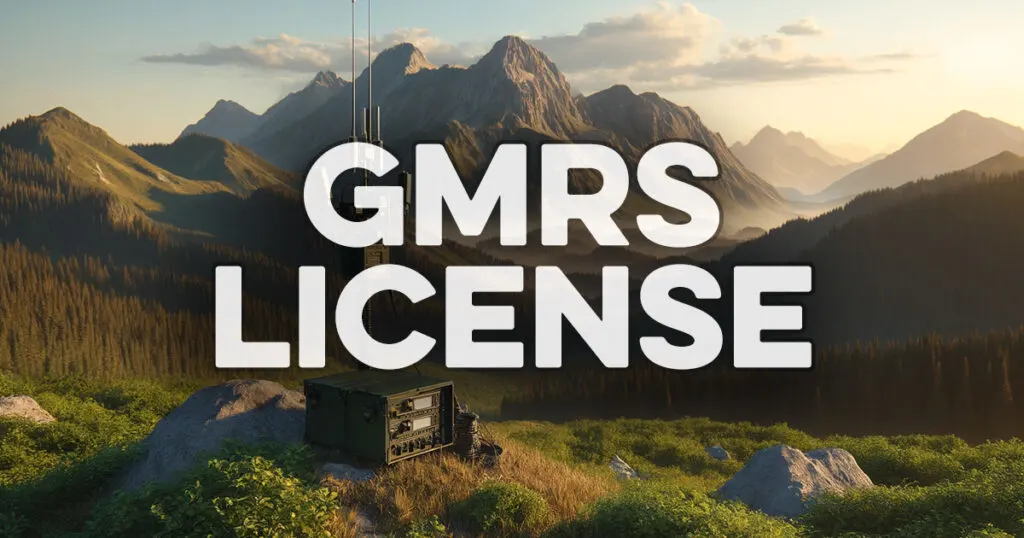
FRS radios, on the other hand, are license-free, making them a hassle-free option for families, event organizers, and casual users. The ease of use and accessibility make FRS a convenient choice for beginners or those looking for simplicity.
How to Get a GMRS License: Step-by-Step Guide, Costs, and Benefits
Quick Comparison:
- GMRS:
- Requires a $35 FCC license (valid for 10 years).
- Covers the license holder and immediate family.
- License process: Online application, no test needed.
- FRS:
- No license required.
- Ready to use out of the box.
Why Licensing Matters: The GMRS license allows for higher power output and repeater use, which significantly enhances range and flexibility. This makes it a practical choice for those who need reliable communication in emergencies or challenging environments.
Do I NEED to Get a License for GMRS?
Yes, a license is required to legally use GMRS radios in the U.S., but the radios will still work without one. However, here are the problems you may encounter if you skip the license:
- Fines and Penalties: Using GMRS without a license can result in FCC fines if you’re caught.
- Limited Repeater Access: Many repeaters block unlicensed users, reducing the range and utility of your radio.
- Interference Issues: Licensed users may report interference, leading to potential enforcement actions.
Features and Customization: GMRS Offers More Flexibility
GMRS radios shine when it comes to features and flexibility. They support external antennas and allow access to dedicated repeater channels, enabling much broader communication networks. Additionally, GMRS radios share some channels with FRS but also have exclusive channels reserved for GMRS users.
How to Communicate with NO Cell Service or Internet (GMRS Recommendations)
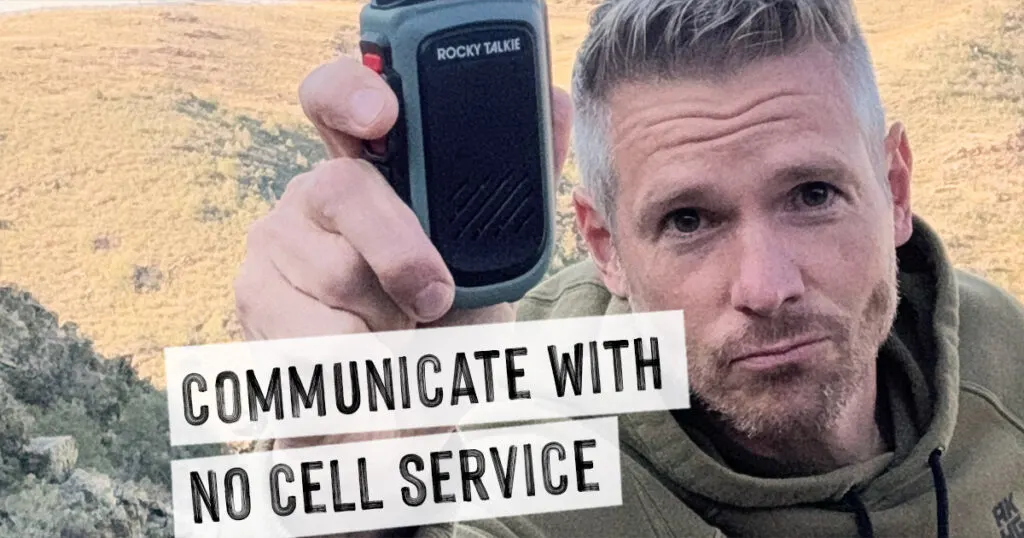
FRS radios are designed to be simple. They have fixed, non-detachable antennas and don’t support repeaters, limiting their customization options. However, this simplicity makes them perfect for users who prioritize ease of use over advanced capabilities.
Key Features:
- GMRS:
- Supports external antennas for improved range.
- Access to repeater channels for extended communication.
- Shared and exclusive channels for flexibility.
- Higher-end models often include weather alerts and advanced features.
- FRS:
- Fixed antennas for straightforward use.
- No repeater support.
- Simple controls ideal for family and casual users.
Additional GMRS Benefits:
- Repeater compatibility extends the range beyond what is typically possible.
- Advanced settings allow fine-tuning for specific use cases like outdoor recreation or emergency communication.
Applications: Which is Right for You?
GMRS:
- Ideal for:
- Emergency preparedness and preppers needing long-range communication.
- Off-road enthusiasts coordinating in remote areas.
- Families or groups requiring reliable communication over large properties or during trips.
FRS:
- Ideal for:
- Short-range communication for camping, hiking, or local events.
- Families needing simple radios for quick, casual use.
- Budget-conscious users who want straightforward functionality.
FAQ: Quick Answers to Common Questions
Q: How much does a GMRS license cost, and who does it cover? A: The GMRS license costs $35, is valid for 10 years, and covers the license holder and their immediate family members.
Q: Can GMRS radios communicate with FRS radios? A: Yes, GMRS and FRS radios share channels 1-22, so they can communicate with each other. However, GMRS radios can use higher power and repeater channels that FRS radios cannot.
Q: What’s the typical range for GMRS and FRS radios? A: GMRS radios can typically reach 5 to 25 miles depending on terrain and equipment. FRS radios have a more limited range of 1 to 2 miles.
Q: Do I need a license to use FRS radios? A: No, FRS radios are license-free and ready to use right out of the box.
Q: Are GMRS radios worth the extra cost and licensing? A: If you need long-range communication, repeater access, or external antenna options, GMRS radios are absolutely worth it. For casual, short-range use, FRS is more cost-effective.
Q: Can GMRS radios be used internationally? A: GMRS regulations vary by country. In the U.S., they require an FCC license. Other countries may have different rules, so always check local regulations.
Q: What accessories can enhance GMRS radios? A: External antennas, repeaters, and power sources (like battery packs) can significantly enhance the performance of GMRS radios.
Choosing between GMRS and FRS comes down to your specific needs. If you want powerful, long-range communication and don’t mind the licensing process, GMRS is the better choice. If you need something simple, affordable, and easy to use for short distances, FRS is the way to go.
By understanding the differences in power, licensing, and features, you can confidently select the best option for your adventures, emergency preparedness, or day-to-day communication. Whether it’s GMRS for its range and capabilities or FRS for simplicity, both options can help you stay connected when it matters most.
Pin it:
